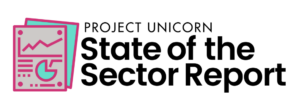End of the Test Doesn’t Mean End of Data

For the first time in decades, there will be no state test–no week-long spring sequestration, no “Quiet Please: Testing” signs, no incriminating proctor gaze, no test anxiety.
But for 25 years, the tests actually provided some uniform information about how learners were progressing, about curriculum, and about groups of students that could use more support.
The good news is that there are other ways of drawing actionable insights–and some of them are already part of the curriculum.
After about 15 lessons of game-based math (less than 90 minutes) in DreamBox, they can give teachers and school leaders an accurate prediction of how students would have scored on state tests.
Dr. Tim Hudson, Chief Learning Officer at DreamBox, said the predictive insights are already available to administrators for K-5 learners and will soon be available for grade 6-8 students.
The assessments are built into the adaptive game-based math learning system so the learner experience is fun and challenging, not a stressful abstraction.
DreamBox opened its system during the pandemic–and schools representing two million learners joined. It allowed learners to continue high-quality math learning and administrators to gain access to accurate information about progress.
Reimaging School
“This is a time to reimagine school,” said DreamBox CEO Jessie Woolley-Wilson.
With a mix of social-distanced onsite and remote learning, it’s not clear what school will look like in the fall. Woolley-Wilson sees it as a chance to rethink instruction and assessment.
In this year (or two) without state testing, it’s a chance to take a “big leap forward,” said Woolley-Wilson.
The fact that adaptive systems like DreamBox (and i-Ready from Curriculum Associates) can accurately predict state test results with a handful of lessons makes you wonder why we spend months preparing for and then take a week off to administer a test just to see how schools are doing.
When schools reopen (or before during a summer learning experience), teachers will be able to quickly assess how to support each student after six months of potential learning loss.
It’s time to move testing into the background and focus on students and their growth.
For more see
- Jessie Woolley-Wilson on Intelligent Ed Tech (2019 podcast)
- Meet DreamBox Learning CEO Jessie Woolley-Wilson
- New DreamBox Learning Feature Provides Personalized Learning Experiences
Stay in-the-know with innovations in learning by signing up for the weekly Smart Update.








0 Comments
Leave a Comment
Your email address will not be published. All fields are required.